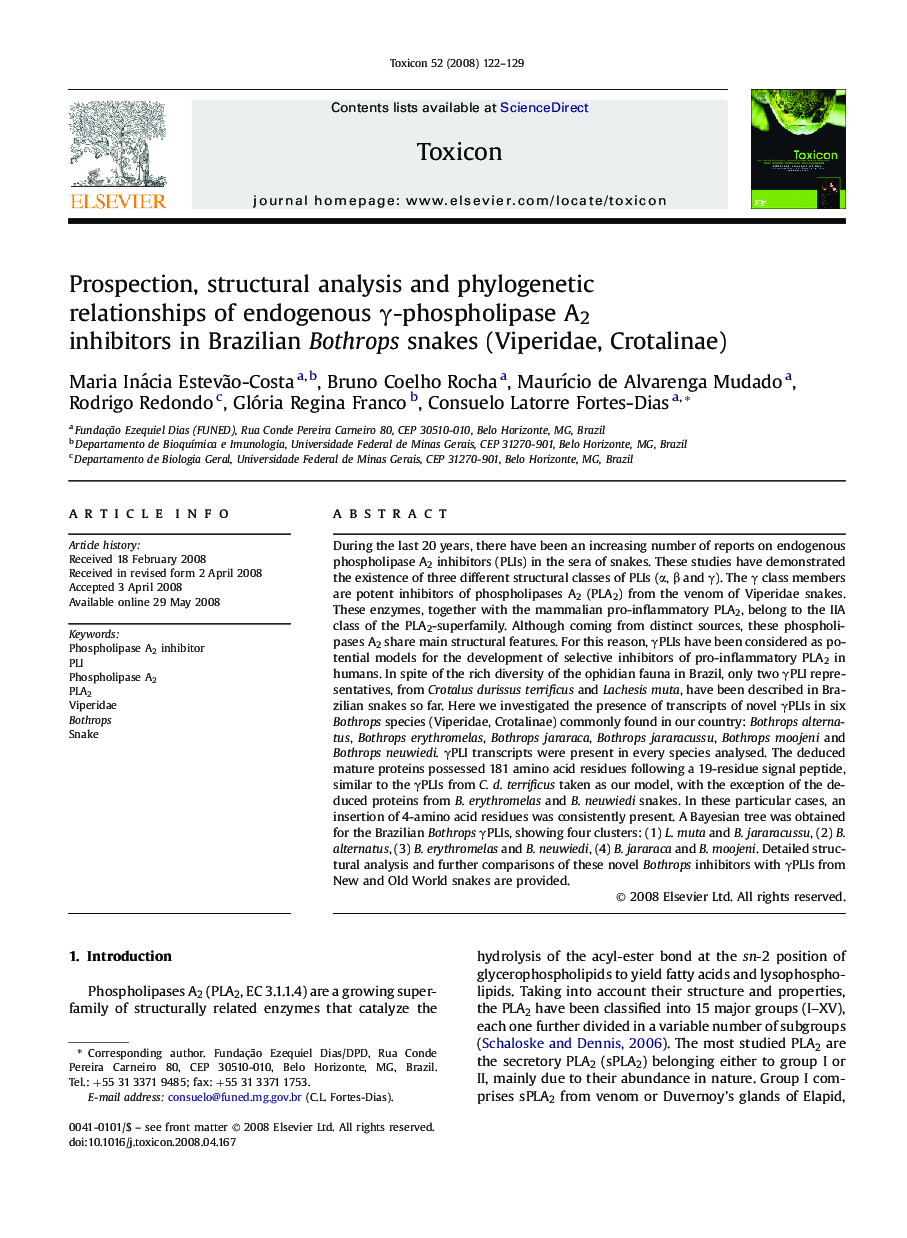| کد مقاله | کد نشریه | سال انتشار | مقاله انگلیسی | نسخه تمام متن |
|---|---|---|---|---|
| 2066598 | 1077244 | 2008 | 8 صفحه PDF | دانلود رایگان |

During the last 20 years, there have been an increasing number of reports on endogenous phospholipase A2 inhibitors (PLIs) in the sera of snakes. These studies have demonstrated the existence of three different structural classes of PLIs (α, β and γ). The γ class members are potent inhibitors of phospholipases A2 (PLA2) from the venom of Viperidae snakes. These enzymes, together with the mammalian pro-inflammatory PLA2, belong to the IIA class of the PLA2-superfamily. Although coming from distinct sources, these phospholipases A2 share main structural features. For this reason, γPLIs have been considered as potential models for the development of selective inhibitors of pro-inflammatory PLA2 in humans. In spite of the rich diversity of the ophidian fauna in Brazil, only two γPLI representatives, from Crotalus durissus terrificus and Lachesis muta, have been described in Brazilian snakes so far. Here we investigated the presence of transcripts of novel γPLIs in six Bothrops species (Viperidae, Crotalinae) commonly found in our country: Bothrops alternatus, Bothrops erythromelas, Bothrops jararaca, Bothrops jararacussu, Bothrops moojeni and Bothrops neuwiedi. γPLI transcripts were present in every species analysed. The deduced mature proteins possessed 181 amino acid residues following a 19-residue signal peptide, similar to the γPLIs from C. d. terrificus taken as our model, with the exception of the deduced proteins from B. erythromelas and B. neuwiedi snakes. In these particular cases, an insertion of 4-amino acid residues was consistently present. A Bayesian tree was obtained for the Brazilian Bothrops γPLIs, showing four clusters: (1) L. muta and B. jararacussu, (2) B. alternatus, (3) B. erythromelas and B. neuwiedi, (4) B. jararaca and B. moojeni. Detailed structural analysis and further comparisons of these novel Bothrops inhibitors with γPLIs from New and Old World snakes are provided.
Journal: Toxicon - Volume 52, Issue 1, July 2008, Pages 122–129